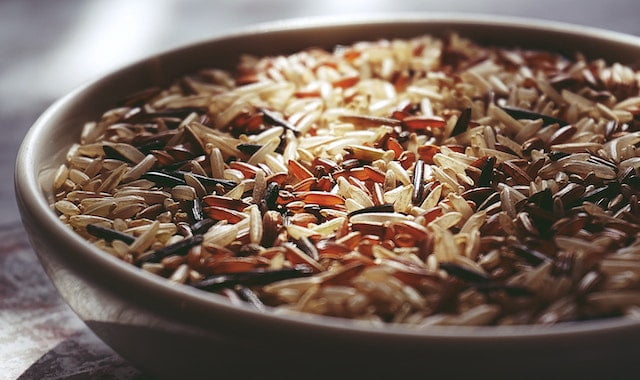If you are trying to lose weight, choosing the right types of foods is important. One type of food that can be particularly beneficial for weight loss is brown rice. Here are the top 15 benefits of brown rice for weight loss:
- Low calorie
One of the main benefits of brown rice for weight loss is that it is low in calories. One cup of cooked brown rice contains about 215 calories, making it a good choice for people who are trying to cut calories.
- High in fiber
Brown rice is a good source of fiber, which can help to keep you feeling full and satisfied after eating. This can help to reduce the temptation to snack between meals and may contribute to weight loss.
- Low glycemic index
Brown rice has a low glycemic index, which means that it is absorbed slowly into the bloodstream. This can help to keep blood sugar levels stable and may reduce the risk of cravings and overeating.
- High in antioxidants
Brown rice is a good source of antioxidants, which can help to protect against free radicals and reduce the risk of chronic diseases. Antioxidants may also help to reduce inflammation, which can be a factor in weight gain.
- Helps to regulate blood sugar
The fiber and nutrients found in brown rice can help to regulate blood sugar levels, which can be beneficial for weight loss.
- Low in fat
Brown rice is low in fat, making it a good choice for people who are trying to reduce their intake of saturated and trans fats.
- Good source of plant-based protein
Brown rice is a good source of plant-based protein, which can help to support weight loss by keeping you feeling full and satisfied after eating.
- May reduce the risk of obesity
Some studies have shown that people who consume brown rice have a lower risk of obesity compared to those who consume white rice.
- May improve digestion
The fiber in brown rice can help to improve digestion and may reduce the risk of constipation, which can be a factor in weight gain.
- May reduce the risk of type 2 diabetes
Consuming brown rice has been shown to reduce the risk of type 2 diabetes, which is a risk factor for obesity.
- May improve cholesterol levels
The nutrients in brown rice may help to improve cholesterol levels, which can be beneficial for weight loss.
- May reduce the risk of heart disease
Consuming brown rice has been shown to reduce the risk of heart disease, which is a leading cause of obesity.
- May reduce the risk of certain cancers
Some studies have shown that consuming brown rice may reduce the risk of certain cancers, including breast and colon cancer.
- May reduce the risk of stroke
Consuming brown rice has been shown to reduce the risk of stroke, which is a leading cause of obesity.
- May improve blood pressure
The nutrients in brown rice may help to improve blood pressure, which can be beneficial for weight loss.
Wrapping It Up
Brown rice is a nutritious and filling choice that can provide a range of benefits for weight loss. Its low calorie content, high fiber content, low glycemic index, high antioxidant content, and low fat content make it a valuable addition to the diet. It may also help to regulate blood sugar, provide plant-based protein, reduce the risk of obesity, improve digestion, reduce the risk of type 2 diabetes, improve cholesterol levels, reduce the risk of heart disease, reduce the risk of certain cancers, reduce the risk of stroke, and improve blood pressure. If you are trying to lose weight, incorporating brown rice into your diet can be a healthy and delicious way to support your weight loss goals.
References:
- “Brown Rice.” Mayo Clinic, Mayo Foundation for Medical Education and Research, 20 Apr. 2021, www.mayoclinic.org/healthy-lifestyle/nutrition-and-healthy-eating/in-depth/brown-rice/art-20044989.
- “The Glycemic Index: What You Need to Know.” Mayo Clinic, Mayo Foundation for Medical Education and Research, 14 Mar. 2021, www.mayoclinic.org/healthy-lifestyle/nutrition-and-healthy-eating/in-depth/glycemic-index/art-20048478.
- “Fiber.” Mayo Clinic, Mayo Foundation for Medical Education and Research, 15 Nov. 2018, www.mayoclinic.org/drugs-supplements/fiber/safety/hrb-20060043.
- “Antioxidants: In Depth.” National Center for Complementary and Integrative Health, U.S. Department of Health and Human Services, 25 May 2021, www.nccih.nih.gov/health/antioxidants-in-depth.
- “Type 2 Diabetes.” Mayo Clinic, Mayo Foundation for Medical Education and Research, 20 Apr. 2021, www.mayoclinic.org/diseases-conditions/type-2-diabetes/symptoms-causes/syc-20351193.




























